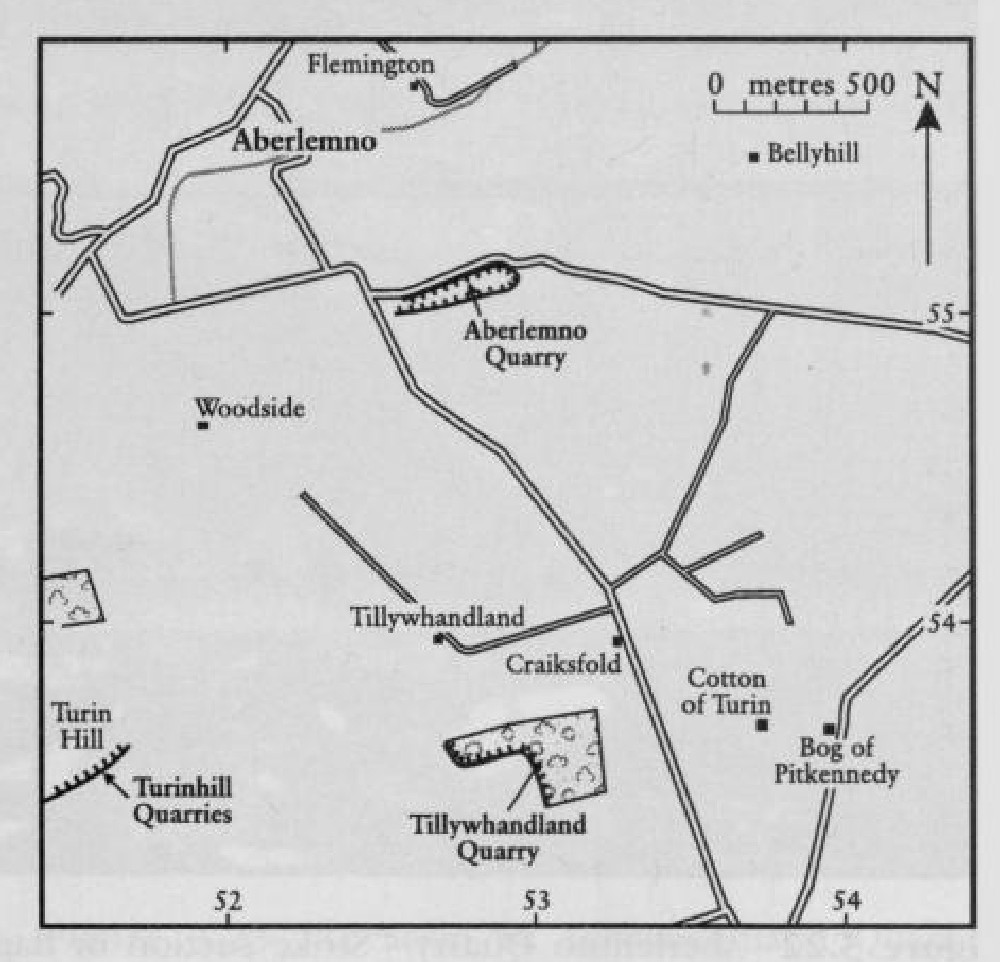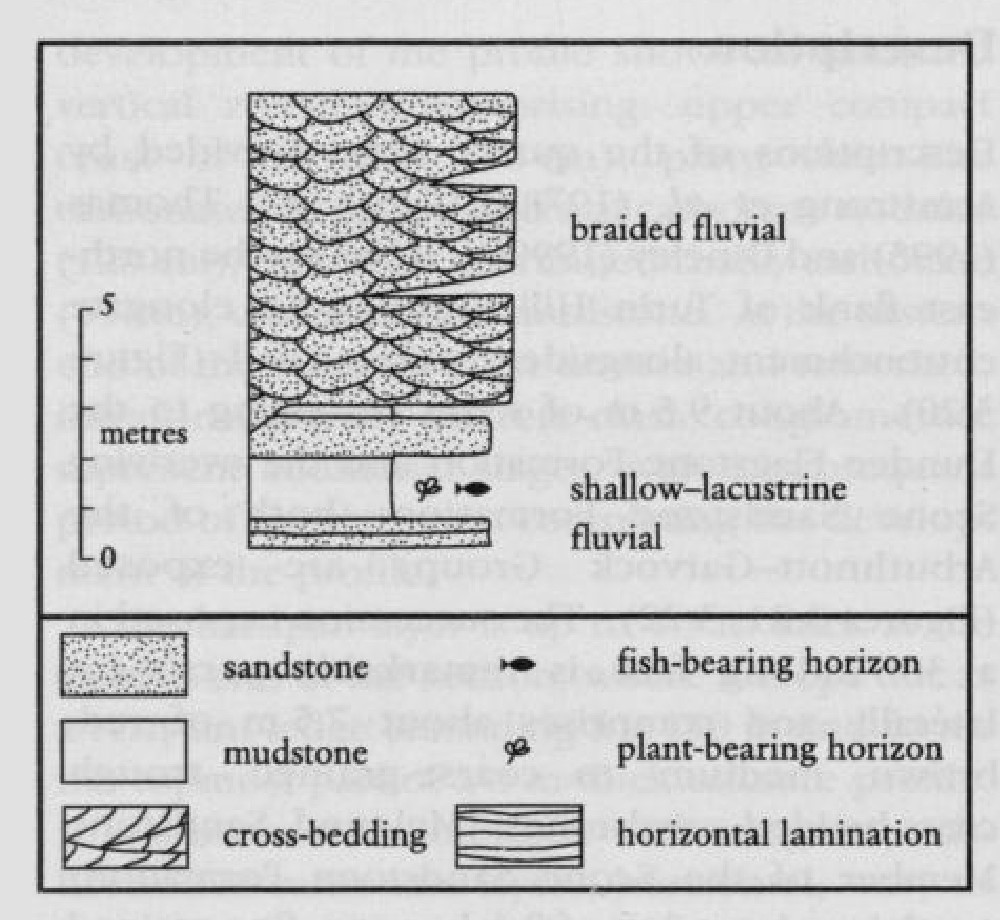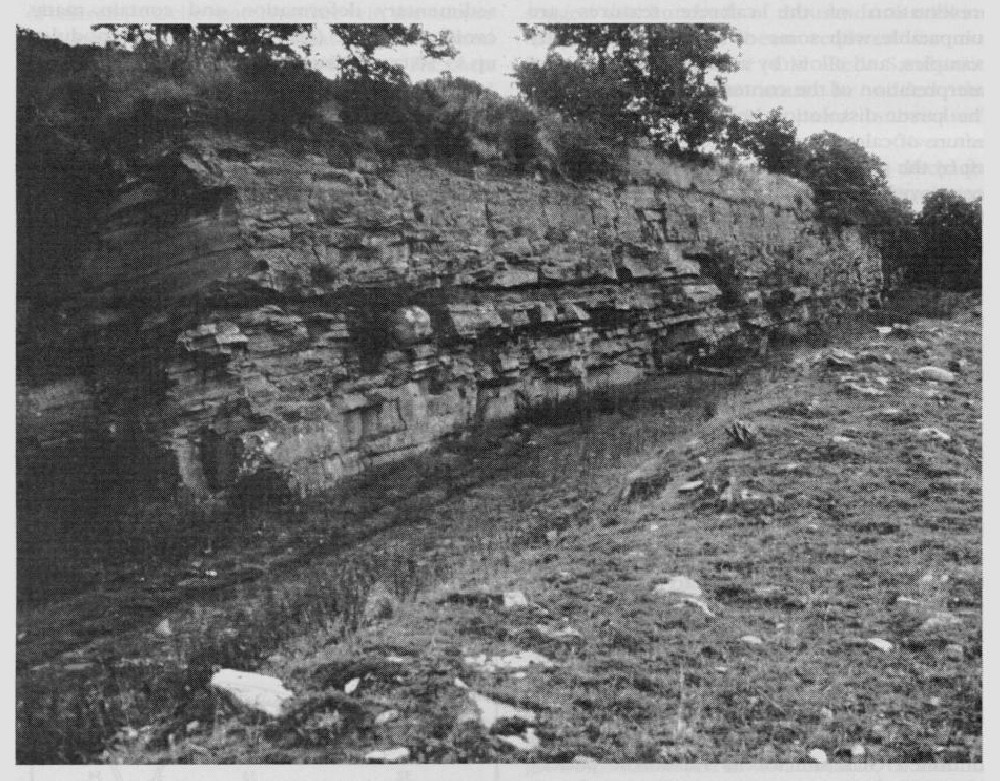Aberlemno Quarry, Angus
Potential ORS GCR site
M.A.E. Browne
Introduction
Aberlemno Quarry is one of a number of quarries (including Tillywhandland Quarry) worked on and around Turin Hill near Forfar, Angus for Arbroath Paving Stone during the eighteenth and nineteenth centuries (Mackie, 1980). Of these, Aberlemno Quarry and Clocksbriggs (or Wemyss) Quarry are well-known fossil plant localities, and Aberlemno is (as 'Furin Hill') already a confirmed GCR site for its Palaeozoic palaeobotany (Cleal and Thomas, 1995) and for its fossil osteostracan fish fauna (Dineley and Metcalf 1999).
Description
Descriptions of the quarry were provided by Armstrong et al. (1978b), Cleal and Thomas (1995) and Dineley (1999c). It lies on the northeast flank of Turin Hill, forming an elongate entrenchment alongside a minor road
Much of the fish remains collected from Turin Hill since the late 1800s are not identified as coming from specific quarries, but comparison of lithologies suggests that many came from this quarry. Heavily armoured cephalaspids dominate the fauna, in contrast to Tillywhandland Quarry (see GCR site report, this chapter) where free-swimming acanthodians dominate. Dineley (1999c) lists the cephalaspid species that are most likely to have been collected from Aberlemno, but only Cephalaspis pagei is definitely attributed to the quarry. Acanthodian spines have been recorded, as well as the arthropod Dictyocaris and the eurypterids Pterygotus and Erieopterus.
The fossil plants in the basal laminated beds are particularly renowned and belong to the Zosterophyllum Zone of Banks (1980). Cleal and Thomas (1995) described them in detail. The commonest are impressions picked out by iron staining, but some coalified compressions and petrifactions also occur. Prototaxites forfarensis. Parka decipiens, Pachytheca sp., Cooksonia caledonica and Zosterophyllum myretonianum have been identified. Most significant are the well-preserved specimens of the alga or early land-plant Parka, the early vascular plant Zosterophyllum and the holotype of Cooksonia caledonica.
Interpretation
The laminated beds at the base of the quarry were interpreted by Armstrong et al. (1978b) as the deposits of a shallow lake. The overlying sandstones of the
Armstrong and Paterson (1970) correlated the Aberlemno fish bed with No. iv of the eight (i to viii) fossil fish horizons they identified in the Arbuthnott–Garvock Group; five beds (i-v) lie in the
Conclusions
Aberlemno Quarry is of international importance for its fossil plant flora, having yielded one of the best Zosterophyllum Zone assemblages in the world. It is also important in being one of the two quarries on 'Ruin Hill (the other being Tillywhandland Quarry) that remain open. A rich fossil fish fauna is dominated by the armoured cephalaspids, in contrast to the free-swimming acanthodians that dominate the fauna at Tillywhandland. The site's conservation value lies in providing an opportunity for further excavation and collection of its fauna and flora.



